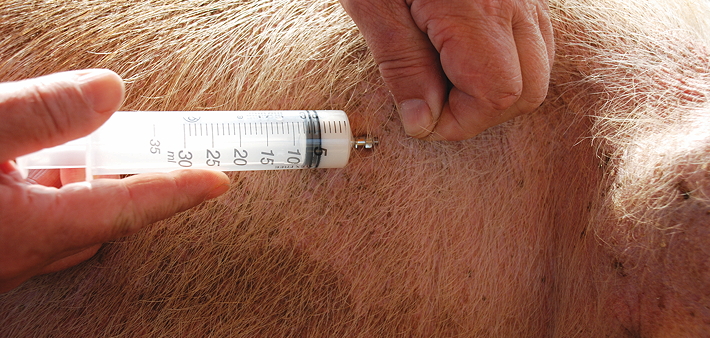A new Government report has been published highlighting the progress made in reducing antibiotic use in animal health relative to human medicine.
The UK One Health Report, published today, brings together data on the levels of antibiotic use in humans and animals. It also covers resistance in four bacteria that are common to both humans and animals in the UK, as well as comparative data on antimicrobial resistance (AMR) in isolates from retail meat.
It finds that the total combined quantity of antibiotics used in human and veterinary medicine dropped by 19% between 2013 and 2017, with a greater reduction in animals (35%) than in human medicine (6%). The majority of indicators used to monitor antimicrobial resistance in food-producing animals either reduced or were stable between 2013 and 2017.
Overall, there was a reduction in resistance to critical antibiotics, Professor Peter Borriello, CEO of the Veterinary Medicines Directorate, said.
He said: “A key priority for the UK government is to protect human and animal health by minimising the development and spread of antibiotic resistance,
“I am pleased to see our progress presented in this second One Health report, which provides valuable information for us to use to progress further in tackling the threat of AMR together.”
Today’s report follows the five-year AMR Strategy, launched on January 24, which set out the ambition for AMR to be contained and controlled by 2040, covering human health, animals, the environment and the food chain.
Industry reaction
The Responsible Use of Medicines in Agriculture (RUMA) alliance also welcomed the report.
A spokesperson said: “In farming, cutting the risk of resistance developing within veterinary medicine is a primary goal as we need to preserve the antibiotics we have to ensure we can continue to treat disease and – in doing so – safeguard animal health and welfare and food safety.
“However, we also need to ensure that risk to human health arising from the use of antibiotics in farm animals is kept to a minimum. We are pleased by the progress in both these areas from measures introduced to improve stewardship, pioneered by the poultry meat sector in 2012 and implemented progressively by other sectors from 2015 onwards.
“This has resulted in a 35% reduction in total tonnes of antibiotics sold for use in all UK animals, which includes farm animals, pets and horses, and a halving in use of highest priority Critically Important Antibiotics (HP-CIAs).
“There is more to do, including delivering the sector-specific targets set by industry by 2020, but this report will be well-received by the farming sectors as it shows that their efforts are bearing fruit.”
NPA senior policy advisor Georgina Crayford welcomed the fact that the report brings human and animal antibiotic usage and resistance data together in one place.
“It is important that antibiotic stewardship is considered in the context of the One Health approach – it is about using antibiotics more responsibly across the board.
“The pig sector has halved its usage in the space of two years, with use of critically important antibiotics down to negligible levels. The sector is committed to delivering against its reduction targets and will continue to work on improving pig health in order to minimise the need for antibiotics and limit the prevalence of resistant bacteria that pose a threat to both human and animal health.
“The reductions seen to date highlight the power of data in driving positive change and also that a voluntary approach can be highly effective, negating the need for costly regulation.”




